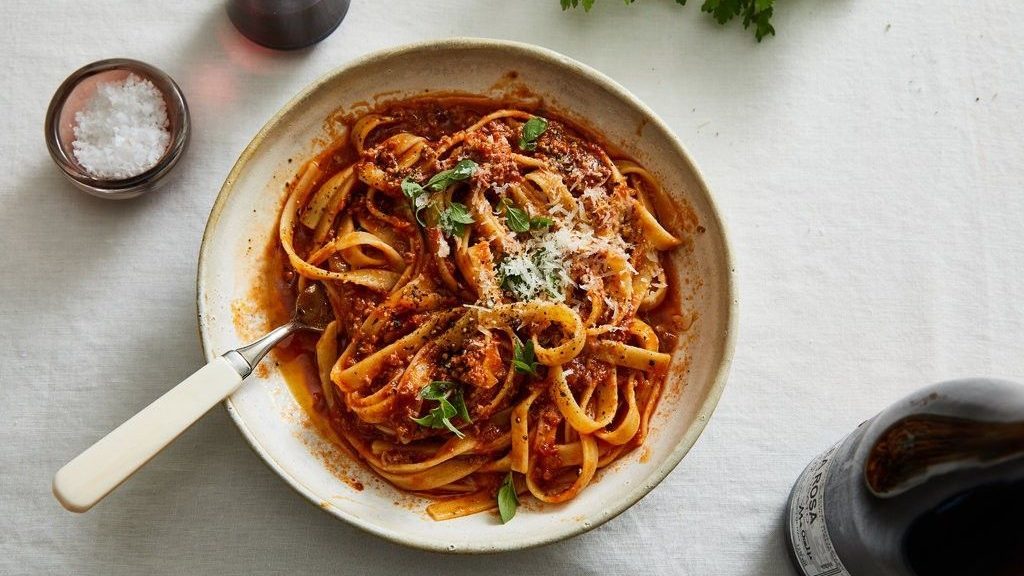Are you confused with the title of today’s dish? Lamb Pasta could mean skewered grilled lamb on top of some pasta, but today we will be introducing a less heard lamb pasta – Lamb Ragù.
How did Ragù come about?
Ragù is an Italian meat-based sauce commonly served with spaghetti pasta. The term ragù came from the French word ragoût. Ragoût, in turn, comes from ragoûter, with a meaning of “to revive the taste”. The French terms arrived at the region of Emilia-Romagna in the late 18th century. This was most probably due to Napolean’s 1796 invasion to the Northen regions.
Since the Renaissance period, there was a long history of meat stews, but those were not known as ragù, nor were they paired with pasta. Early 16th century, it was common for the pasta to be cooked and served with meat broth, somewhat like a soupy dish where meat was removed, served separately, or even eaten at all.
It was not until the end of the 18th century that there are documentations of recipes for a meat sauce where cooked meat was a pivotal part of the sauce being served with pasta. Alberto Alvisi, the chef to the Cardinal of Imola, recorded the first ragù meat sauce, ragù per i maccheroni.
At that time, maccheroni generally means pasta, both fresh and dried. After that, the recipe was replicated and published as The Cardinal’s Ragù (Il Ragù del Cardinale).
Recipes for ragù appeared regularly in cookbooks from the Emilia-Romagna region after the 1830s. Heavy meat sauces were paired with pasta on feast days and Sundays amongst the wealthier people of Italy by the late 19th century as the meat was expensive during those days.
According to research, the lamb pasta was a dish for the rich. Before World War II, the Italian rural population fed on plant-based diets, meaning that pasta was reserved for special occasions before the revolution of dried pasta take place.
Ragù vs Bolognese
Ragù is often mistaken for Bolognese, which is also an Italian favourite. Ragù is meat-based with some meat choices such as veal, beef, lamb or pork. Lamb meat is a common choice. A small amount of tomato sauce is added to it.
The meat is minced along with soffrito (diced carrot, pancetta and celery) made with wine, beef broth, a little bit of milk or heavy cream to lighten the colour of the sauce while enriching its flavour.
Bolognese, however, is a variation of ragù using white wine and less tomato sauce. Similarly to ragù, bolognese uses beef, onions, meat broth, sofrito, white wine, milk or cream. The meat often is dependent on the cook. Hence, different forms of meat give a different variation of bolognese.
Ragù is typically used with spaghetti pasta while its bolognese counterpart often pairs with wider-shaped pasta such as the lasagna. Perhaps it is due to the thickness of the bolognese that goes well with it.
The difference between ragù and bolognese is the ration of ingredients, which is subtle but provides quite a difference.
Where to find Lamb Pasta?
Savour an authentic dish of Lamb Ragu at El Fresco Kitchen, The Daily Grind, and Don’s Diner. Pasta combined with the rich and flavourful meaty sauce is perfect for a date and family gatherings. Don’t forget! You can order via foodpanda too.
If you enjoy lamb dishes, you can read about Yaki Ramu Rakku – a Japanese lamb dish that is sought after by many around the world!
